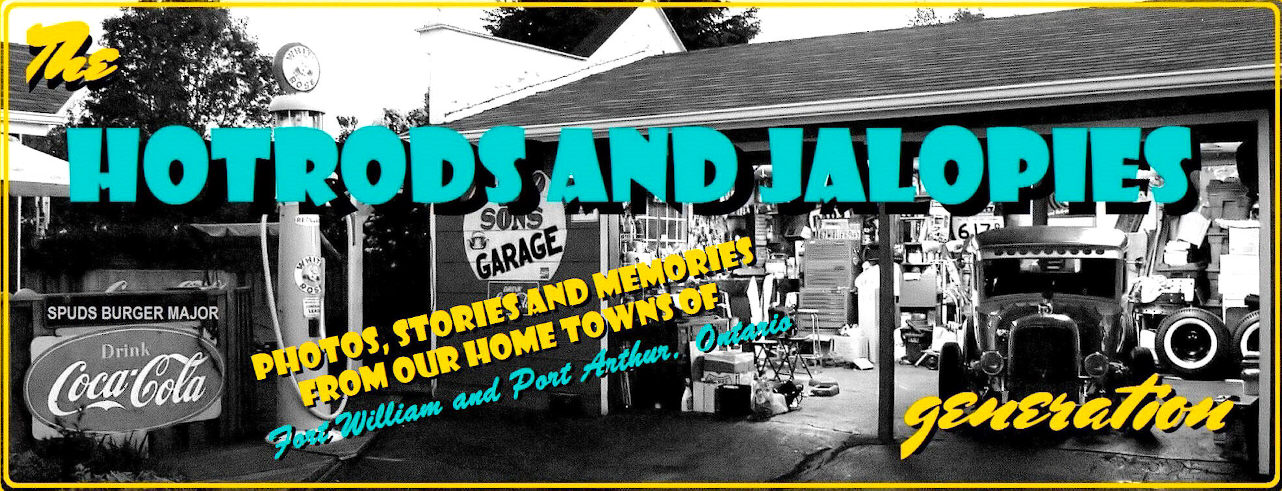

My friend Shaun Hopkins(hope I can call him that...LOL) as far as I'm concerned and many others will agree, is the best car painter here in Thunder Bay Ontario(formerly Fort William and Port Arthur). Shaun has painted most of my Hot Rods through the years and I am grateful for the wonderful workmanship(don't blush Shaun...it's true...I've seen Ron's roadster).
Shaun received his talent naturally as his dad painted cars for many years as well, firstly at Graham and Whybourne, then at Northwestern Body and Fender and finally moving on to other shops here in Thunder Bay.
The photo shown just above of those three handsome young men is that of Shaun's dad Gerry on the left, Shaun's uncle Mel on the right and in the middle, none other than that guy that we all knew who raced that model "A" jalopy in the '50's #54 above, Wally Prokosh. More about that #54 car click here or scroll wayyyyyy down http://hotrodsandjalopies.blogspot.com/2009/07/car-54-where-are-you.html
Shaun said that his dad was 5-6 years younger than Wally but had gone to all the races in later years, and his dad having his 74th birthday this year would give us an idea of the age of the photo(sorry Gerry for divulging your age...hope you don't mind!) The Prokosh family and the Hopkins' lived in the east end of Fort William then(where the actual original Fort William was originally established) at the end of Mctavish Street, which was not too far down from where this photo was taken.
This photo was taken in front of Smerges' Pool Hall at 702 McTavish Street and the building still exists today as a private residence. Thanks Shaun and Gerry for the wonderful photo and story...this is the stuff I really like, and with photos to back it up.......GREAT!








The Canadian Imperial Bank of Commerce, just left of the Royal Theatre(see below) was one of the most beautiful structures in downtown Fort William. The top left photo shows the bank in its heyday and the Victoria Ave picture to its right was taken in about 1910 with only 1 horseless carriage shown in the photo and shows the bank building on the right. At that time, the Royal wasn't quite there yet as the sign shows Clarke's Drugs on the awning.
The latter two photos show the outside and inside of the skeleton of the Bank as it stands today. A tremendous fire a couple of years back destroyed the old bank(it had already been closed and boarded up for years), but some very wonderful person had the foresight to save the facade of this beautiful structure for someone in future years to hopefully develop.




The Royal Theatre photo at the left was taken near the end of WWI in 1918 and was on 407 Victoria Ave. The after photo at the right is actually the same basic building done over with a new facade and is now Madgical's Golf Kingdom. The Royal in the 1950's was the place where you could bring a quarter and it would be enough to watch a number of serials such as The Three Stooges or Laurel and Hardy or even some Roy Rogers or Hopalong Cassidy, watch a full length feature or two, a bunch of cartoons and would even be enough for a Coke and some popcorn. I don't have a 1950's photo but it looked pretty much like it does in this photo. I suppose the red crosses had something to do with the war effort at the time.
Be sure to click on all the photos to enlarge them!



















































